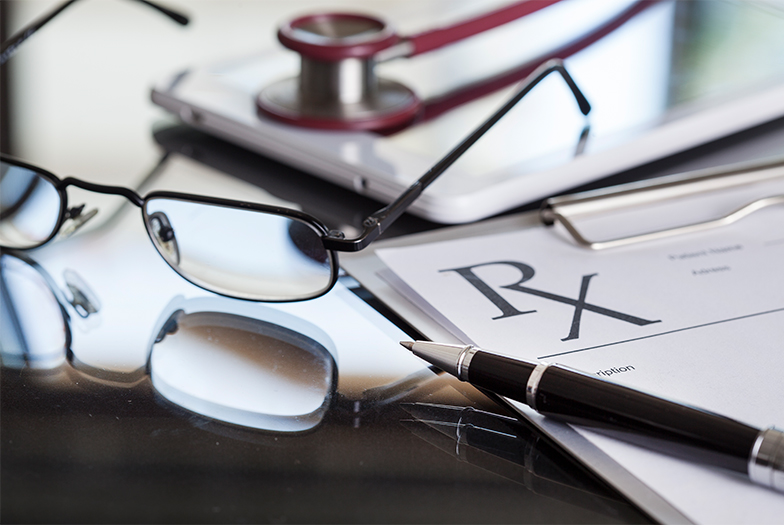Pharmacy schools are taking a closer look at addressing mental health and well-being among faculty, staff and students.
By Jane E. Rooney
Well before the recent coronavirus pandemic began, addressing mental health and well-being in the pharmacy community and among healthcare students and professionals had taken on some urgency. A study published in April in the American Journal of Health-System Pharmacy that assessed the risk of burnout in critical care pharmacists found that the risk is high and comparable to the risk in other critical care practitioner groups. Burnout was assessed from three aspects: emotional exhaustion, depersonalization and reduced personal achievement. Out of 193 critical care pharmacists, 64 percent reported at least one syndrome of burnout, and 14.5 percent reported burnout in all three scales.
In July 2019, recommendations from the National Consensus Conference on “Enhancing Well-Being and Resilience Among the Pharmacist Workforce” (a collaborative effort from the American Pharmacists Association, the Accreditation Council for Pharmacy Education, the National Association of Boards of Pharmacy, the National Alliance of State Pharmacy and AACP) jumpstarted the need to more formally address the stresses and strains of pharmaceutical practice as well as the mental health of future pharmacists in pharmacy schools. Among the 50 recommendations the group approved, 12 specifically address pharmacy education, including incorporation of well-being education and training.
This led AACP to launch the Community for Well-Being and Resiliency this past January in Connect, a members-only online resource. The group’s creation was based on a “common need for quality resources and ideas to infuse the well-being science into pharmacy education,” according to the vision statement. The Connect Community organizers, Dr. Eleanor Vogt, professor emerita, University of California San Francisco School of Pharmacy, and Dr. Beth Buckley, associate professor, Department of Pharmacy Practice, Concordia University Wisconsin School of Pharmacy, reached out to other schools to determine the interest level and find out what wellness initiatives were already in place. The positive feedback—39 schools responded—prompted Vogt, Buckley and AACP to move forward with the new Connect Community. Responses from schools indicated a wide variation in approaches, from incorporating mental health topics into the curriculum to offering electives to co-curricular activities.
“While the gradient appears wide, certainly there is a growing momentum. There are schools that are just putting their toe in the water, so to speak, with individual faculty who are addressing mental health in their own classes, while a number of some schools (like my own) that have been offering coursework and training for several years, as in our Certificate in Resiliency Medicine,” explained Vogt. “My dream is to have a Pharmacology of Resilience course as a legitimate required course within the core curriculum, and that the NAPLEX will contain questions on both the science and evidence-based guidelines regarding well-being and resiliency.”
Addressing positive mental health “has been on the back burner for several years,” she continued. “The well-being science is robust and yet apparently ignored by significant parts of the medical and pharmacy community.” To that end, at the AACP Strategic Planning Retreat last October, President-elect Dr. Anne Lin charged a task force with investigating how AACP and its members have been addressing the recommendations from the consensus conference.
“We found that our member schools and faculty, as well as AACP, have been engaged in addressing these recommendations in a number of ways,” said Dr. David Zgarrick, professor, Department of Pharmacy and Health Systems Sciences, Bouvé College of Health Sciences, Northeastern University, and an AACP Board of Directors member who chairs the task force. “Our preliminary report was presented to AACP’s Board of Directors in February. Based on our discussions, it has become apparent that addressing the well-being and resilience of not only pharmacists, but also the faculty, staff and students in our own communities, needed to come ‘front and center’ as AACP considers the development of our next strategic plan.”
Well-being and resilience have not been explicitly addressed in previous strategic plans, Zgarrick noted, but changes in the pharmacy practice environment—an evolving healthcare system that contributes to job stress, work overload and burnout—prompted discussion about bringing more visibility to the issue. “It is likely that the implementation will be differentiated and specific to the needs of the various constituencies that we serve,” he said. “While there will likely be calls for various well-being and resilience matters to be integrated into curricula taken by students, there will also be programs and other resources that address the needs of faculty, staff, preceptors, alumni and the profession.”
A Post-Pandemic Shift
Dr. Monica Miller, clinical associate professor, Purdue University College of Pharmacy, led AACP’s 2017–18 Student Affairs Standing Committee, which formulated recommendations and a policy statement regarding student well-being and served as AACP’s representative voice on the “Enhancing Well-Being and Resilience Among the Pharmacist Workforce Consensus Conference” planning committee. The standing committee’s overarching recommendations included combatting the mental health stigma; embracing vulnerability and healthy dialogue among faculty, staff and students as it relates to coping mechanisms; and the need for continued professional development and curricular integration of well-being and resilience topics.
“Conversations on well-being and resilience have transformed on a local and national level,” Miller noted. “There has been ongoing activity within our professional organizations and universities to address this topic. I personally have transitioned this year into being the Wellness Fellow at Purdue University College of Pharmacy where my focus is on enhancing the culture of wellness for our college community. Due to the growing focus on this topic, I have tapped into a network of others across the country who are sharing in this work. From my dialogue and investigation, many colleges are working to implement wellness and resilience activities within their curricula to varying degrees.”

